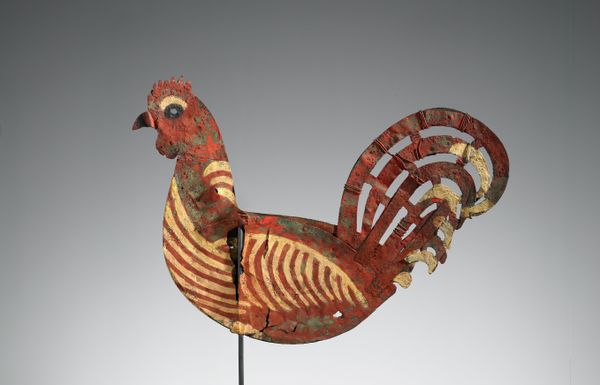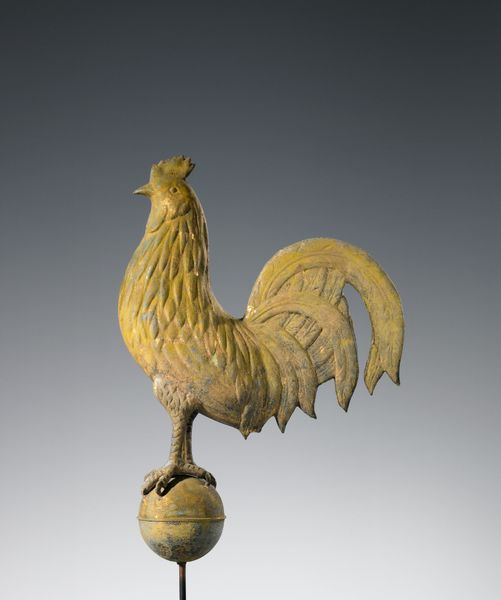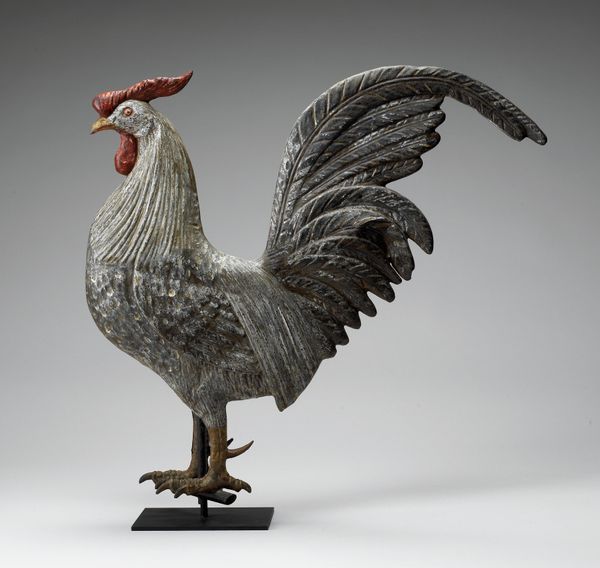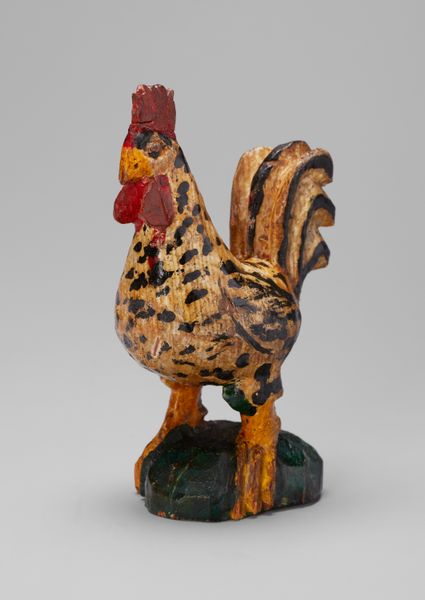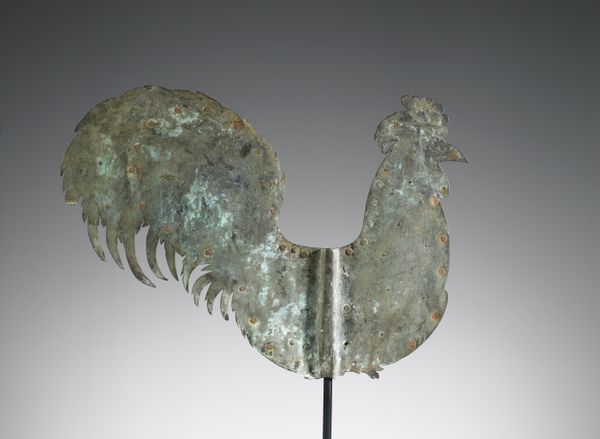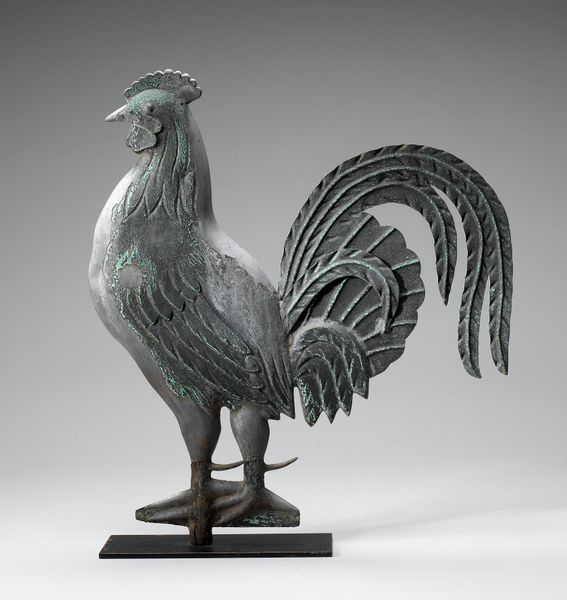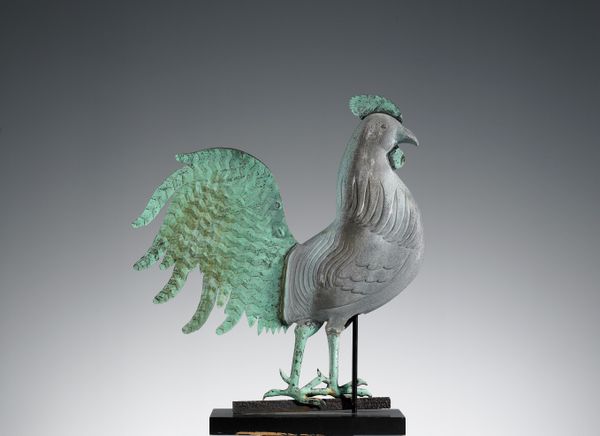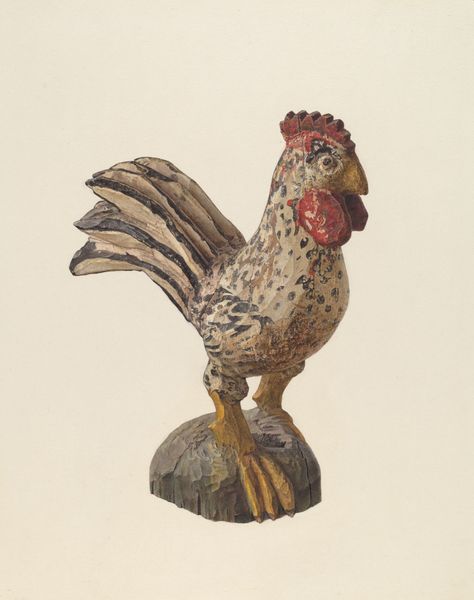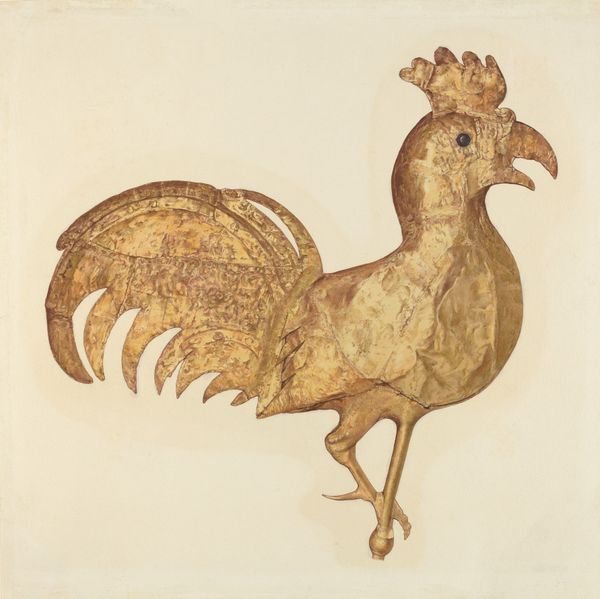
Dimensions: 23 3/4 x 22 5/16 x 1 5/8 in. (60.33 x 56.67 x 4.13 cm) (including swivel base)
Copyright: Public Domain
Curator: Here we have a rooster weathervane, crafted around 1890, now residing here at the Minneapolis Institute of Art. It appears to be an assemblage of metal, possibly even found objects. What are your first thoughts? Editor: Well, the first thing that strikes me is the incredible sense of movement captured in such a static object. The line of the rooster's body, from beak to tail, is just so dynamic, like a frozen dance. Curator: Absolutely, and it’s vital to remember that this wasn't created as 'art' in the traditional sense. This rooster, hammered and shaped, likely by a skilled tradesperson, served a functional purpose guiding farmers or townspeople on wind direction. It embodies the fusion of craft and utility prevalent at the time. Editor: And look at the patina. That aged, almost corroded surface… It gives the rooster such depth and character. The rust becomes almost another layer of expressive color, deepening the shades on its metal form. Curator: That very patina speaks volumes about the social context too. It’s testament to the weather, labor, and ultimately, the economic realities of late 19th-century America. This isn't high art created in a studio; it’s a practical object, subject to environmental forces. Editor: Yet, that environmental interaction only enhances the composition. The way the rust creates these swirling patterns on the body mirrors the invisible currents it was built to indicate. The artist, whether intentionally or not, captured the essence of movement through degradation. Curator: Indeed! It blurs the line between 'fine art' and 'functional object.' Who decided what belongs in a museum, and what tops a barn? Examining the context reveals hierarchies embedded in our art world, reflecting specific modes of production and consumption. Editor: The interplay between the rooster's form and the elements—it's all so elegantly balanced, and you’re right; the artist couldn’t possibly ignore that context. Even an act of practical crafting resonates, almost speaks of something universal! Curator: Seeing the object, acknowledging its place of fabrication, reminds us of a much larger framework; of everyday interactions, craftsmanship, and history woven together. I love the subtle ways the surface allows for these layers of understanding. Editor: Yes, this weather-beaten rooster, elevated to a museum piece, provokes thoughts regarding craftsmanship, art, and societal interactions, making this much more than an item marking wind direction.
Comments
No comments
Be the first to comment and join the conversation on the ultimate creative platform.
